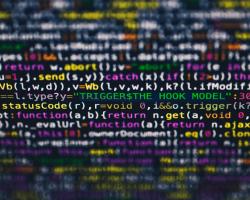Siting Experience Documents Only
Country
Keywords
WP 5 Final Report: National Insights
WP 5 Final Report: National Insights
The objective of the National Insights was to develop as far as possible “a historical and strategic vision of the radioactive waste governance” for participants of a same country. While decision-making processes in radioactive waste management very often remain technically driven, there is a need to put forward and give substance to a more open and inclusive decision-making process. The notion of governance is often used to label this type of decision-making process.
Structuring local communities and development of local democracy for engagement in Radioactive Waste Management governance
Structuring local communities and development of local democracy for engagement in Radioactive Waste Management governance
Engagement of local communities and actors in the decision-making processes is traditionally motivated by the fact they are impacted by the decision taken. This traditional rationale for engagement of local communities and actors is driven not only by ethical concerns, but also by the necessity for public authorities to comply with national or international legal frameworks which give to stakeholders, concerned by a decision having environmental impacts, the right to be informed and participate in the decision (e.g.
Long Term Governance for Radioactive Waste Management WP4
Long Term Governance for Radioactive Waste Management WP4
The purpose of COWAM2 Work Package 4 (WP4) on "e;long term governance"e; was to identify, discuss and analyse the institutional, ethical, economic and legal considerations raised by long term radioactive waste storage or disposal on the three interrelated issues of: (i) responsibility and ownership of radioactive waste over long term, (ii) continuity of local dialogue between stakeholders and monitoring of radioactive waste management facilities, and (iii) compensation and sustainable development.
WP 3 Quality of decision-making process Proposed Framework for Decision-making Processes
WP 3 Quality of decision-making process Proposed Framework for Decision-making Processes
The long-term governance of radioactive waste is complex socio-technical issue. The disposition of radioactive waste is decided on ethical grounds, having to take into account a variety of other dimensions (society, economy, ecology, politics, time, space, and technology). Thereto, a study of variants is required. Decision theory, in principle, takes diverse options as a starting point begin as the basis of a decision.
WP 2 Appendix 8 Mechanisms for Local Influence on National Decision Making Processes in Radioactive Waste Management
WP 2 Appendix 8 Mechanisms for Local Influence on National Decision Making Processes in Radioactive Waste Management
This document develops further the questions offered to stakeholders in the Berlin Meeting (see Appendix). It describes mechanisms that local stakeholders can use to influence national decision-making processes in radioactive waste management.
Guidance on the Selection of PTA Tools: For Stakeholders involved in Radioactive Waste Governance WP1
Guidance on the Selection of PTA Tools: For Stakeholders involved in Radioactive Waste Governance WP1
This research on "e;Guidance on the selection of PTA tools for stakeholders involved in radioactive waste governance"e; was performed under the umbrella of COWAM2-'Work Package 1' (WP1). Through a dialogue on enhancing involvement at a local level, WP1 allows local stakeholders to examine the issues they face in building a democratic local governance process. WP1 also tests how Participatory Technology Assessment (PTA) methods can offer a consensual framework and a platform for deliberative co-decision among scientific and societal actors at the local level.
Recommendation Group 6
Recommendation Group 6
REFLECTIONS ON THE INFLUENCE OF THE LOCAL ACTORS ON THE NATIONAL NUCLEAR WASTE MANAGEMENT FRAMEWORK
Recommendation Group 4
Recommendation Group 4
European-level Guidelines for the Inclusive Governance of Radioactive Waste Management
European-level Guidelines for the Inclusive Governance of Radioactive Waste Management
CIP (Community Waste Management In Practice) is a research action gathering a wide spectrum of stakeholders from five European countries, interested in how society should manage the radioactive wastes that result from nuclear power production and/or from medical, military or industrial applications.
WP 2 Appendix 9 Principles and Good Practices for Local Actors to Influence National Decision-Making Processes
WP 2 Appendix 9 Principles and Good Practices for Local Actors to Influence National Decision-Making Processes
The outcomes of policy-making in radioactive waste management (RWM) should be driven by the will of the people through democratic processes. Achieving this inclusiveness requires good practices to increase local influence on what is essentially a national policy process. However inclusiveness poses significant practical problems; can society afford lengthy and costly consultation processes, often perceived as inefficient and ineffective?
Final Report: Influence of Local Actors on National Decision-making Processes WP2
Final Report: Influence of Local Actors on National Decision-making Processes WP2
Work Package 2 (WP2) focused on the ways in which local stakeholders can influence national decision-making processes on radioactive waste management (RWM). The participants in WP2 were particularly interested in examining how local stakeholders could contribute to national debates. Their interest stemmed from the fact that participants from France, Spain and the United Kingdom — who made up the majority of the WP2 group — were engaged, as stakeholders, in the decision-making processes that were under way in each of those countries.
Recommendation Group 2
Recommendation Group 2
Locating a radioactive waste repository in the ring of fire
Locating a radioactive waste repository in the ring of fire
The scientific, technical, and sociopolitical challenges of finding a secure site for a geological repository for radioactive wastes have created a long and stony path for many countries. Japan carried out many years of research and development before taking its first steps in site selection.
H12: Project to Establish the Scientific and Technical Basis for HLW Disposal in Japan Project Overview Report
H12: Project to Establish the Scientific and Technical Basis for HLW Disposal in Japan Project Overview Report
As outlined in the overall program for high-level waste (HLW) management in Japan, defined by the Atomic Energy Commission (AEC), HWL separated from spent nuclear fuel during reprocessing will be immobilized in a glass matrix and stored for a period of 30 to 50 years to allow cooling; it will then be disposed of in a stable deep geological formation.
Evaluating Site Suitability for a HLW Repository
Evaluating Site Suitability for a HLW Repository
The primary objective of government policy, and of NUMO in implementing this policy, is to
ensure that a repository for Japan’s high-level radioactive waste is located so as to provide
secure isolation of the waste and adequate safety for present and future generations. This
means that the site has to be chosen carefully, taking full account of all its characteristics. In
order to address these characteristics in an orderly and structured manner, we have established
Japan Atomic Energy Agency (JAEA) Brochure
Japan Atomic Energy Agency (JAEA) Brochure
JAEA Brochure
Joint Convention on the Safety of Spent Fuel Management and on the Safety of Radioactive Waste Management, National Report of Japan for the Third Review Meeting
Joint Convention on the Safety of Spent Fuel Management and on the Safety of Radioactive Waste Management, National Report of Japan for the Third Review Meeting
Nuclear facilities in Japan are as listed in the following table, the details of which are described in Section D.
D1-9 Prospective Case Study - Romania
D1-9 Prospective Case Study - Romania
Impact of Nuclear Information on Young People's Knowledge and Attitudes: Methods/Participatory tools in an Educational Program WP1
Impact of Nuclear Information on Young People's Knowledge and Attitudes: Methods/Participatory tools in an Educational Program WP1
Despite in Romania nuclear research activities were started in early 50s, the nuclear power is very young. First NPP, Cernavoda Unit 1, about 600 MWe, was in operation since 1996. Next unit (Cernavoda Unit2) will be in operation at the end of 2007. Therefore, a relative low amount of high level waste was produced. However, some problems already exists in Romania, mainly related to historical radioactive wastes released by nuclear industry and research.
Joint Convention on the Safety of Spent Fuel Management and on the Safety of Radioactive Waste Management, National Report of Japan for the Fourth Review Meeting
Joint Convention on the Safety of Spent Fuel Management and on the Safety of Radioactive Waste Management, National Report of Japan for the Fourth Review Meeting
Nuclear facilities in Japan are listed in Table A1-1, the details of which are described in Section D.<br/>The overview of spent fuel management and radioactive waste management and the current<br/>status of the preparation of radioactive waste disposal regulation system are shown in Table<br/>A1-2 and Table A1-3 respectively.
Joint Convention on the Safety of Spent Fuel Management and on the Safety of Radioactive Waste Management, National Report of Japan for the Third Review Meeting - Annexes
Joint Convention on the Safety of Spent Fuel Management and on the Safety of Radioactive Waste Management, National Report of Japan for the Third Review Meeting - Annexes
Joint Convention on the Safety of Spent Fuel Management and on the Safety of Radioactive Waste Management, National Report of Japan for the Third Review Meeting - Annexes
Geological Challenges in Radioactive Waste Isolation
Geological Challenges in Radioactive Waste Isolation
Over the past forty years, the development of the technology needed to isolate radioactive waste in underground rock systems has been found to be a formidable problem. This is especially the case in connection with high-level waste (HLW) after its removal from operations in nuclear power plants. There is also the additional problem of isolating low- and intermediate-level waste (LILW).
Geological Challenges in Radioactive Waste Isolation Third Worldwide Review
Geological Challenges in Radioactive Waste Isolation Third Worldwide Review
The first worldwide review of geological problems in radioactive waste isolation was published by the Ernest Orlando Lawrence Berkeley National Laboratory (Berkeley Lab) in 1991 (Witherspoon, 1991). This review was a compilation of reports that had been submitted to a workshop held in conjunction with the 28th International Geological Congress that took place July 9Ð19, 1989, in Washington, D.C.


